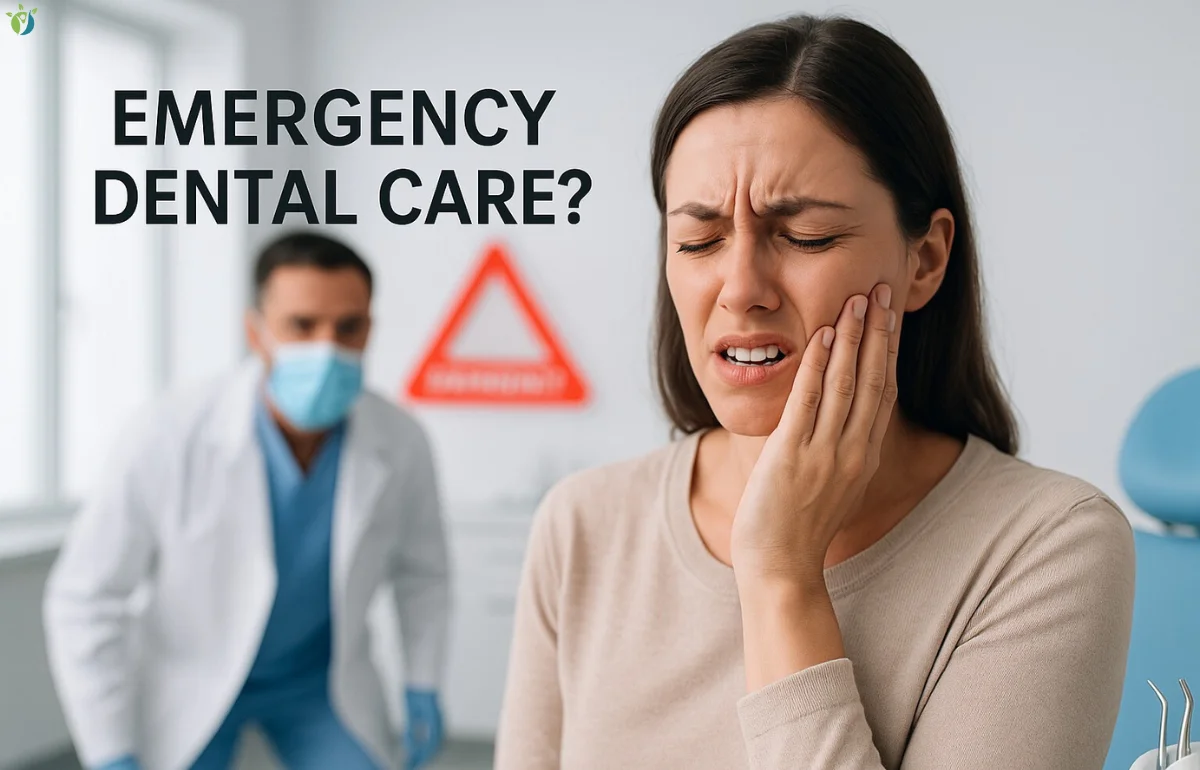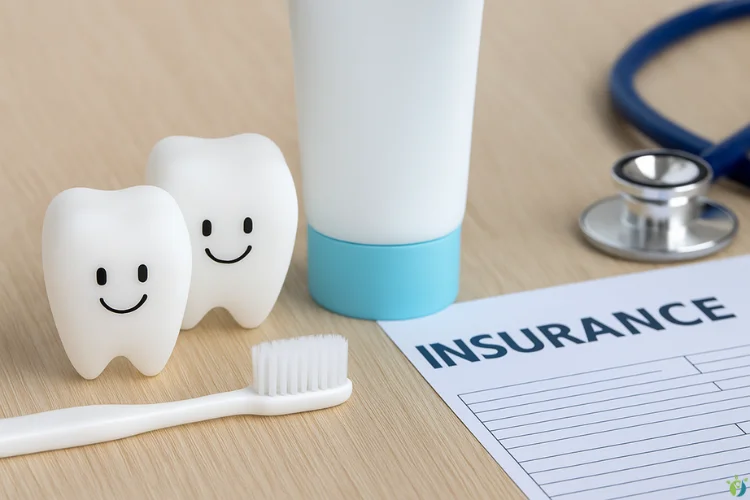
It’s 2 a.m., your tooth feels like it’s trying to escape your skull, and you’re wondering, “Is this going to cost me a fortune?” Dental emergencies strike without warning, and unless you’re a walking insurance policy encyclopedia, it’s tough to know what’s actually covered. Let’s clear the confusion and walk through what emergency dental care your insurance really helps with – and what it doesn’t.
What is Emergency Dental Care?
Definition and Examples
Emergency dental care refers to any treatment needed to relieve severe pain, stop bleeding, prevent tooth loss, or control a serious infection. It’s not about vanity – it’s about urgent medical needs.
Urgent vs Non-Urgent Dental Issues
- Urgent: Knocked-out tooth, swelling, abscesses, extreme pain
- Non-Urgent: Chipped tooth without pain, mild tooth sensitivity, routine cleaning
Common Types of Dental Emergencies
- Knocked-Out Tooth – Time is of the essence – get to the dentist ASAP. Insurance often helps here due to the severity and need for quick intervention.
- Cracked or Broken Teeth – Especially painful when nerves are exposed. Coverage often includes initial care and pain relief.
- Severe Toothache or Abscess – These are signs of infection, and insurance usually kicks in for pain management and antibiotics.
- Lost Fillings or Crowns – Not life-threatening, but painful and disruptive. Some plans cover temporary fixes until full treatment can be scheduled.
Does Dental Insurance Cover Emergencies?

General Rule of Coverage
Most dental insurance plans do offer some level of emergency coverage – but it’s not a free-for-all.
What Most Basic Plans Include
- Emergency exams
- X-rays
- Palliative (pain relief) treatment
What May Require Additional Coverage
- Root canals
- Crowns or bridges
- Surgery beyond extraction
Understanding Different Types of Insurance Plans
- PPO (Preferred Provider Organization): You get flexibility and partial coverage even if you visit an out-of-network dentist, though it’ll cost more.
- HMO (Health Maintenance Organization): Less flexibility. You’re generally limited to in-network providers unless it’s life-threatening.
- Discount Dental Plans: These aren’t true insurance but can lower the cost of emergency visits and procedures.
- Medical Insurance Crossover: Sometimes your health insurance might chip in – especially if the dental issue stems from a serious accident or medical condition.
What Emergency Treatments Are Typically Covered
The team at Aura Family Dental explains what emergency dental treatments are often covered by insurance:
- Pain relief – Temporary fillings or prescribed medications are usually covered to help stabilize your condition.
- Temporary restorations – Short-term solutions to get you comfortable until a full treatment can be scheduled.
- Extractions – If a tooth needs to be removed, insurance often helps cover the procedure.
- Antibiotics and medications – Prescriptions given during emergency dental visits are typically covered under dental or medical insurance plans.
Treatments That May Not Be Covered
- Cosmetic Procedures – Even if your broken front tooth is a cosmetic nightmare, it may not be fully covered unless it causes pain.
- Long-Term Dental Work – Crowns, bridges, or implants may only be partially covered or require separate approval.
- Non-Emergency Visits – Routine checkups, cleanings, or exams unrelated to emergencies are not covered under emergency clauses.
How to Know What Your Insurance Covers
Reading Your Dental Insurance Policy: Sounds boring, but it’s crucial. Look for sections on “emergency care,” “palliative treatment,” or “exclusions.”
Calling Your Provider: Ask directly about emergency coverage, co-pays, and what’s considered “in-network.”
Pre-Authorization and Estimates: When possible, get pre-approval – even during an emergency, your provider might approve coverage on the fly.
- Paying for Emergency Dental Care Without Insurance
- Payment Plans and Financing
Many clinics offer payment plans. Healthcare financing is the area of expertise for businesses such as CareCredit.
Dental Schools: Local dental schools often provide low-cost emergency services under supervision.
Community Health Clinics: Search for government-subsidized or nonprofit clinics in your area for low-cost options.
Reimbursement and Claims Process
- Submitting a Claim – Your provider or clinic can usually help. Forms are available online for most insurance companies.
- Required Documents – Receipts, x-rays, dentist’s notes, and treatment details are essential.
- Follow-Up Steps – Monitor claim status, respond to any requests for additional info, and keep copies of everything.
Tips to Maximize Your Coverage

Use In-Network Dentists
You’ll save big when sticking to providers your insurance already partners with.
- Schedule Preventative Care
- Regular visits can help avoid emergencies altogether – bonus, these are usually covered!
- Maintain Good Dental Hygiene
- Floss, brush, and rinse to keep those pearly whites out of danger.
- When Medical Insurance May Help
- Dental Emergencies from Accidents
- If your emergency stems from a car crash, sports injury, or workplace accident, your health insurance may jump in.
- Hospital-Based Care Coverage
If you end up in the ER for dental pain or infection, your medical plan might partially cover the visit.
Common Misconceptions About Dental Insurance
- “All Emergencies Are Covered” – Not quite. Some emergencies are too “minor” to qualify.
- “It is not necessary for me to read the fine print.” You do, in fact. Coverage varies wildly between providers.
- “Medical Insurance Always Steps In” – Only in specific cases – never assume you’re double covered.
Choosing the Right Insurance Plan for Emergencies
- Compare Policies Carefully
- Look at what emergency care is included – not just cleanings and checkups.
- Know Your Deductible and Co-Pay
- These affect what you’ll pay out of pocket during emergencies.
- Ask About Emergency-Specific Provisions
- Some insurers have 24/7 emergency hotlines or offer urgent visit allowances.
When a dental disaster strikes, the last thing you want is to be blindsided by a big bill. Knowing exactly what your insurance covers – and what it doesn’t – can make all the difference between stress and swift recovery. Stay informed, read your plan, and always have a game plan for dental emergencies. Your mouth (and your wallet) will thank you later.
FAQs
1- What qualifies as a dental emergency for insurance?
- Severe pain, bleeding, infection, or trauma that requires immediate treatment usually qualifies.
2- Will insurance cover an emergency if I’m out of town?
- It depends on your plan – some offer out-of-network emergency coverage, others don’t.
3- Can I get emergency dental coverage without full insurance?
- Yes, through short-term or discount dental plans that offer urgent care benefits.
4- How much does emergency dental care typically cost?
- Anywhere from $100 to over $1,000 depending on the procedure and insurance coverage.
5- Can I use a health savings account (HSA) for emergency dental costs?
- Absolutely – HSAs and FSAs can both be used for eligible dental expenses.